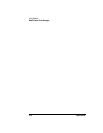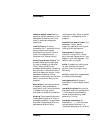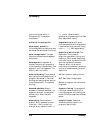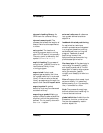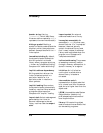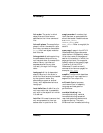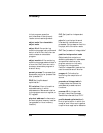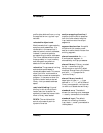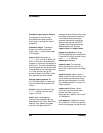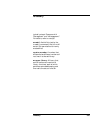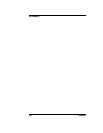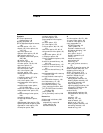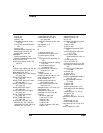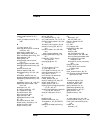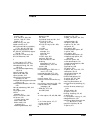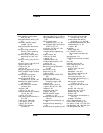
322 Glossary
Glossary
standard input/output library
A collection of routines that
provide efficient and portable
input/output services for most C
programs.
standard output The default
stream for sending character
output data — usually connected
to the screen.
startup file Also known as
crt0.o, this is the first object file
that is linked with an executable
program. It contains the program's
entry point. The startup code does
such things as retrieving command
line arguments into the program at
run time, and activating the
dynamic loader (dld.sl(5)) to load
any required shared libraries.
storage export symbol An
uninitialized global variable that
may be referenced outside of the
library.
stream A data structure of type
FILE * used by various input/
output routines.
stub A short code segment
inserted into procedure calling
sequences by the linker. Stubs are
used for very specific purposes,
such as inter-space calls (for
example, shared-library calls), long
branches, and preserving calling
interfaces across modules (for
example, parameter relocation).
Refer to the manual PA-RISC
Procedure Calling Conventions
Reference Manual. See also
import stub and export stub.
supporting library A library
that was specified on the command
line when building a shared library
(with ld -b…). Same as
dependent library.
symbol name The name by
which a procedure, function, or
data item is referred to in an object
module.
symbol table A table, found in
object and archive files, which lists
the symbols (procedures or data)
defined and referenced in the file.
For symbols defined in the file, an
offset is stored.
system calls System library
routines that provide low-level
system services; they are
documented in section 2 of the HP-
UX Reference.
text segment A segment of read-
only memory in which a program's
machine language instructions are



